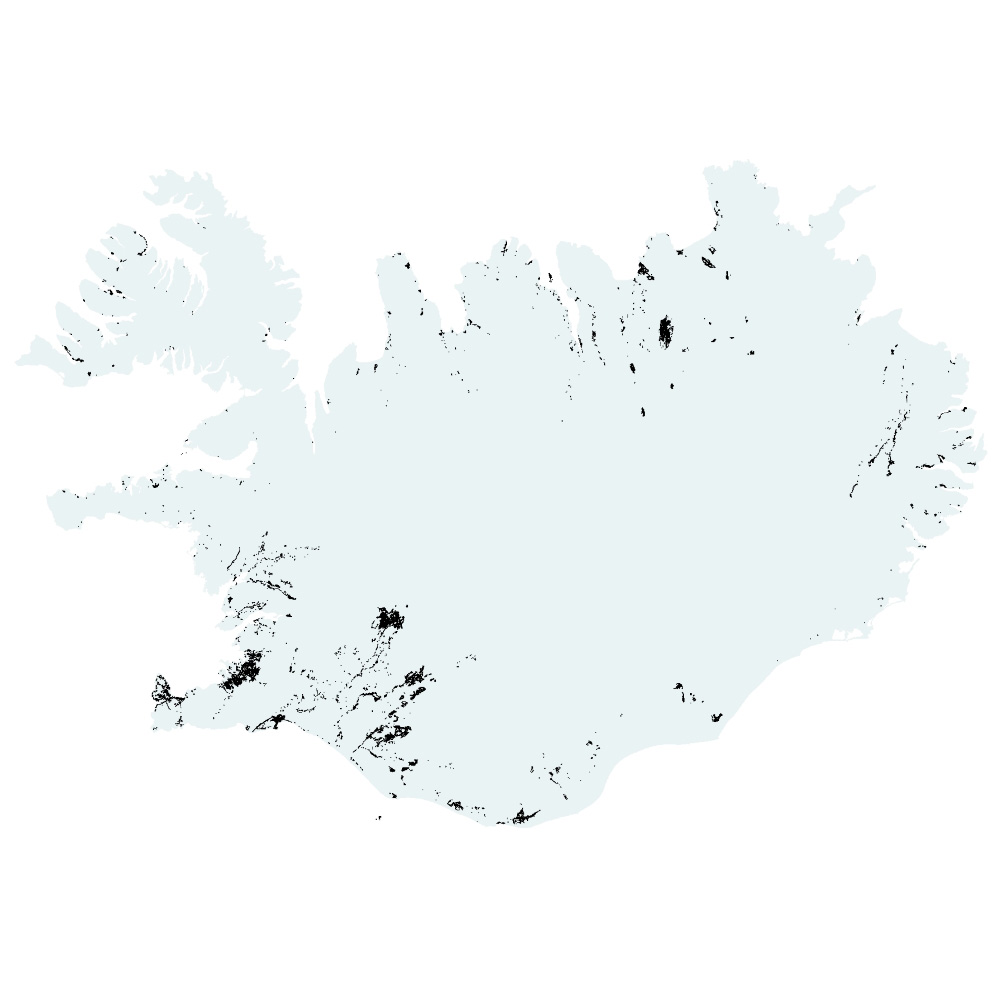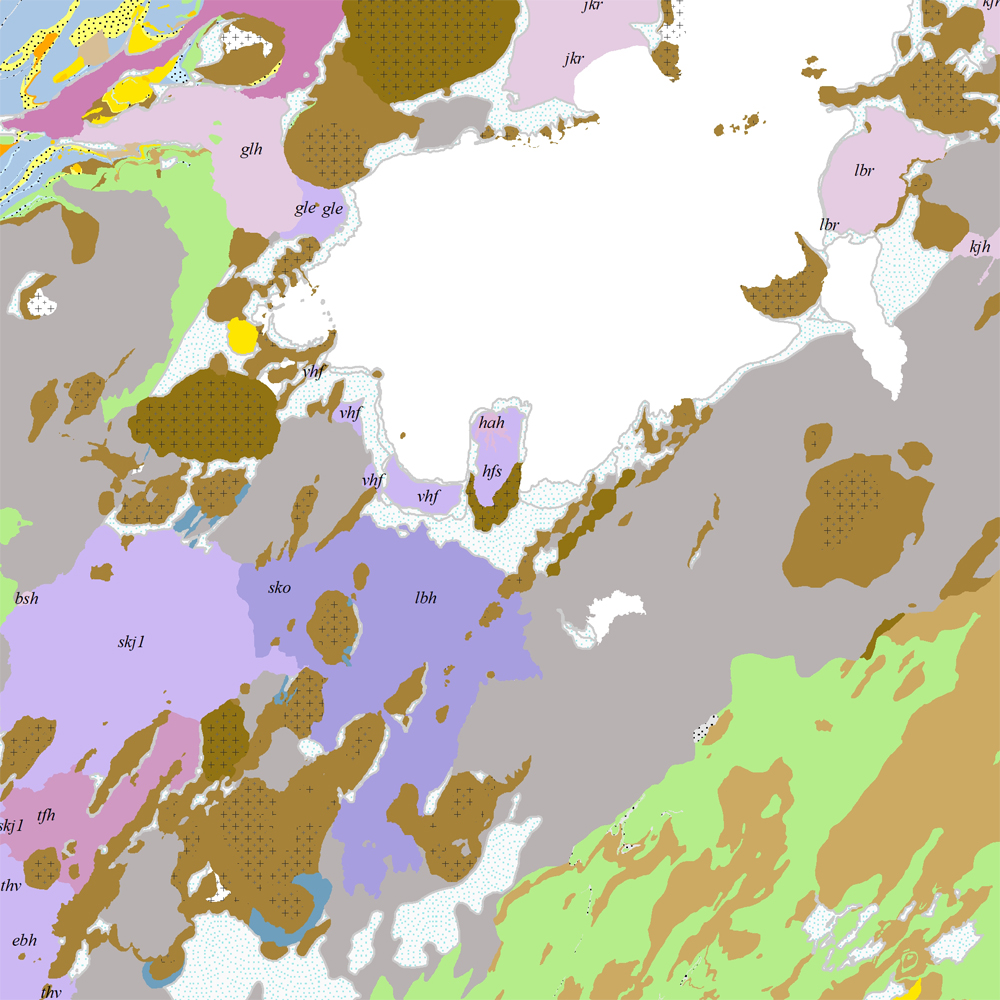Type of resources
Available actions
Topics
INSPIRE themes
Keywords
Contact for the resource
Provided by
Years
Formats
Representation types
Update frequencies
status
Service types
Scale
Resolution
-

Akkeri og baujur og áætlaðar staðsetningar fyrir búnað í sjókvíaeldi.
-

Niðurhalsþjónustur Minjastofnunar
-

Gögnin sýna hvar leyfi hafa verið gefin út vegna framkvæmda við veiðivötn. Ekki er um að ræða opin gögn. Gögnin eru vistuð hjá Fiskistofu.
-

Gagnasafn (GDB) NI_G1v_lupina_3.utg: Útbreiðsla alaskalúpínu á Íslandi, 3. útgáfa. [Nootka lupin coverage of Iceland, 3rd edition.] Endurskoðað kortlagningu á útbreiðslu alaskalúpínu á landinu, flákalag. Alaskalúpína (Lupinus nootkatensis), sem skilgreind er sem ágeng, framandi plöntutegund hér á landi, er orðin mjög útbreidd og þekur víða stór svæði. Hún veldur miklum breytingum á náttúrufari þar sem hún breiðist um.
-

Upplýsingar um eldissvæði í sjókvíaeldi sem eru í umsóknarferli hjá Matvælastofnun.
-

Þekja sem sýnir halla lands í gráðum byggt á landlíkani Náttúrufræðistofnunar (IslandsDEM útg. 1). Aðeins er sýndur halli á ákveðnu bili sem miðast við algengan upptakahalla snjóflóða. Litir og flokkun halla er ætluð til að hjálpa ferðafólki í fjalllendi að meta halla í brekkum með tilliti til upptakahalla snjóflóða. Þekjuna er hægt að birta sem myndkorta-flísar (XYZ, 512x512 pixlar) í Web-Mercator vörpun (EPSG:3857). Sniðmát fyrir slóðina á flísarnar eru: https://geo.vedur.is/geoserver/www/imo_slopemap_epsg3857_v1/{z}/{x}/{y}.png Skýringarmynd fyrir litakvarða er aðgengileg hér: https://geo.vedur.is/geoserver/www/imo_slopemap_epsg3857_v1/Legend_box_v1.png
-

Skoðunarþjónustur fyrir INSPIRE tilskipunina
-

Vinsamlega hafið samband við Fiskistofu vegna nánari upplýsinga.
-

The European Space Agency (ESA) is an intergovernmental organization dedicated to the exploration of space and the advancement of space science and technology. Established in 1975 and headquartered in Paris, France, ESA operates in collaboration with its 22 member states to conduct space missions, develop satellite systems, and foster international cooperation in space research and exploration. ESA's activities span a wide range of areas, including Earth observation, space science, human spaceflight, satellite navigation, and telecommunications. One of ESA's primary objectives is to collect and analyze data from space to better understand Earth's environment, climate, and natural phenomena. Through its Earth observation programs, such as the Copernicus program, ESA operates a fleet of satellites that monitor the planet's land, oceans, atmosphere, and cryosphere. These satellites collect a wealth of data on topics like sea level rise, deforestation, air quality, and natural disasters, providing valuable information for environmental monitoring, disaster response, and scientific research. In addition to Earth observation, ESA conducts space science missions to study the cosmos and unravel the mysteries of the universe. From missions to explore distant planets and asteroids to observatories studying the origins of the universe, ESA's space science endeavors produce vast amounts of data on celestial bodies, cosmic phenomena, and the fundamental laws of physics. To disseminate the data collected from its missions and satellite systems, ESA employs various channels and platforms. ESA operates data archives and repositories where researchers and the public can access raw and processed data from space missions and Earth observation satellites. Additionally, ESA collaborates with national space agencies, research institutions, and international organizations to share data and promote scientific collaboration. Through online portals, data hubs, and dedicated data access platforms, ESA provides easy and open access to its vast repository of space data, empowering scientists, policymakers, and citizens to explore and utilize space-derived information for scientific research, innovation, and societal benefit. This page contains a quick reference how to access and find ESA datasets and services.
-

Þekja [layer] j100v_vesturgosbelti_berggrunnur_1utg_fl: Gögn fyrir berggrunn ásamt nútímahraunum. [Data showing the bedrock geology, including Holocene lavas.] Berggrunnur er flokkaður eftir aldri, gerð og samsetningu. Gögn eru flokkuð eftir ÍST120:2012 staðlinum, nema fitjueigindir: myndunKodi = stuttur kóði sem táknar gerð bergmyndunar, myndunIS = stutt íslenskt heiti fyrir bergmyndun, myndunEN = stutt enskt nafn á bergmyndun, eldstodNafn = nafn eldstöðvakerfis, kenni = stuttur kóði fyrir hlýskeiðishraun og nútímahraun, aldur = aldursbil, Nýr kóði fyrir fitjueigindina 'Tegund storkubergs' (tegStorkubergs): dbas = dílabasalt. [Bedrock is classified by age, type, and composition. The data follows the ÍST120:2012 data standard with these additional feature attributes: myndunKodi = short code denoting the rock formation type, myndunIS = short Icelandic name for rock formation, myndunEN = short English name for rock formation, eldstodNafn = name of the volcanic system, kenni = short codename for interglacial and postglacial lavas, aldur = age range. New code for feature attribute 'Tegund storkubergs' (tegStorkubergs): dbas = porphyrytic basalt.]
 Lýsigagnagátt
Lýsigagnagátt